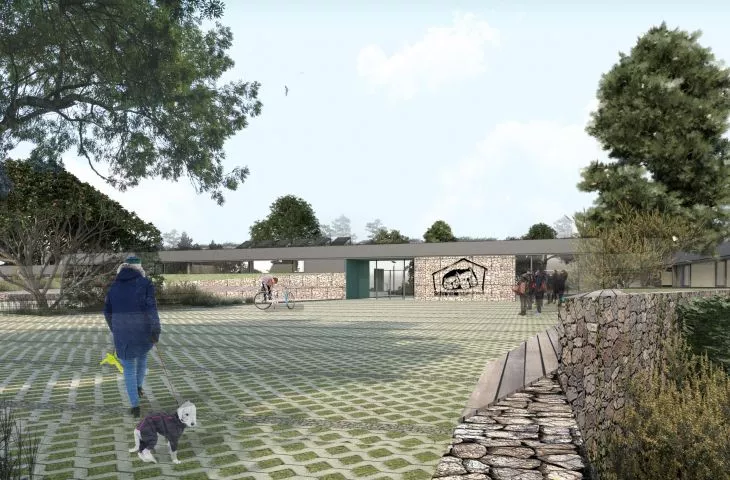A new shelter for homeless animals in Szczecin has been designed by architects from the O2 Architekci studio. The modern facility consisting of five pavilions will be built on a plot of land on South Street, and the area of the buildings will be 2 thousand square meters. We talk about friendly design, challenges and inspiration with architect Katarzyna Opalinska.
The newly designed shelter will accommodate about 80 dogs and 60 cats. Two of the five pavilions will be dedicated entirely to dogs, and one separate one for cats. Each dog box will have a separate covered, fenced enclosure. Open runs will also be created between the pavilions. The rest of the site will provide for a visitors' area, educational rooms, veterinary offices, a hospital with an operating room, social rooms, storerooms and offices. In order not to disturb local residents, the facility will be located more than 650 meters from the nearest buildings. The City of Szczecin plans to allocate PLN 15,710,011.16 gross for the construction of the shelter , the company that wins the tender will have 24 months to implement the investment.
public enclosure linked by an area of landscaped greenery
© O2 Architects
Architecture & Business: How did you approach the design of the shelter?
Katarzyna Opalinska: Our adventure with this project began quite unusually. Since the beginning of our activity we have been eagerly participating in architectural competitions and one of them was a competition for the design of a shel ter for homeless animals in Sopot, in which we took an honorable, but not much bringing third place. After some time, however, we were approached by the director of the municipal shelter in Szczecin, who was looking for designers to develop a preliminary concept for the shelter in the newly agreed location for it. Thus began our rather long-lasting close cooperation, based on mutual determination to create a design for a modern facility, whose functional-utility program was to be precedent-setting in the whole country, and then to bring it to fruition.
A&B: What was the inspiration for this project?
Katarzyna Opalinska: When embarking on the work, we drew knowledge and inspiration primarily from foreign sources (including the UK, Germany), where realizations of this type have quite a rich tradition, but we also benefited from the vast experience of the director of the hostel. It is thanks to her passion that we were able to apply solutions that go beyond the standard ones found in facilities of this type in the country. A very important factor that influenced the shape of the premise is, of course, the land on which the facility is to be built. Remaining in accordance with the provisions of the local zoning plan for the area in question and in response to its shape, the idea was to divide the facility into smaller pavilions connected by roofs. Thus, between the pavilions, open enclosures were created, as well as a public enclosure linked by an area of landscaped greenery, providing an additional incentive to visit the facility.
A&B: How was the space divided and why in this way?
Katarzyna Opalińska: The functional-spatial layout was developed based on the investor's detailed guidelines in accordance with the principle of separating the various functions, which were arranged in independent but interconnected pavilions. The central front pavilion contains the entrance area with a waiting room, secretariat, adoption room and education room, as well as a complex of surgeries and treatment rooms. Subsequent pavilions located at the front contain offices, locker rooms, sanitary facilities for staff and volunteers, while at the far end are the facilities and infrastructure rooms of the shelter itself, i.e. the kitchen, warehouses, technical rooms, etc. Attractively arranged boxes for cats were placed in a separate pavilion away from the two pavilions designated for dogs. The latter were planned to group the boxes in groups of about 20 each, separated by soundproof locks.
southern elevation of the shelter
© O2 Architects
Each box will be equipped with a heated floor and a modern kennel to maintain a sense of comfort and home security. Instead of standard bars, it is planned to use partitions in a system of glazed aluminum ironwork, so that the charges will be visible by staff and visitors from the corridor. Covered individual paddocks with hardened, easy-to-maintain ground intended for each dog will face the openings towards the green areas, while the partitions between individual stations will be solid and maintained in subdued but optimistic colors. All this is done to keep the animals calm by limiting their interaction with each other.

































